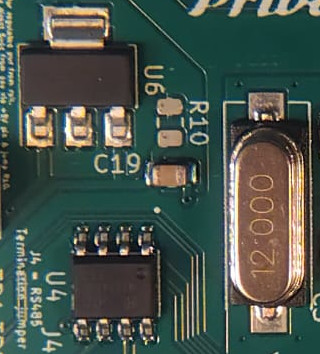The initial board tests yielded promising results, with only a minor issue identified relating to tracing to an ESD protection diode array. Despite this hiccup, I’m quite satisfied with the progress so far… yet, as always, there’s room for enhancement.
In our rigorous testing phase, we subjected the RS-485 connection to exhaustive back-to-back testing, totalling close to a million messages. Impressively, we encountered no issues, only occasional dropped messages and data errors, all of which were intentionally induced and correctly detected. Signal integrity, including shape and slew rate, is good.
Aside from the aforementioned ESD glitch, all other components are functioning flawlessly: dual voltage regulators, EEPROM, oscillator, test points, programming, and USB. Regulation is good, all the way to 18V dc.

Currently, we’re in the process of integrating USB-C (in a vertical orientation), updating some Schottky diodes, and implementing several minor tweaks. The revised designs will soon undergo fabrication, aiming to further refine the performance and reliability of the system.
The boards were made by JLCPCB, and I have to say that their work was excellent.
Shipping was fast. The components were perfectly placed, and no defects were apparent.
